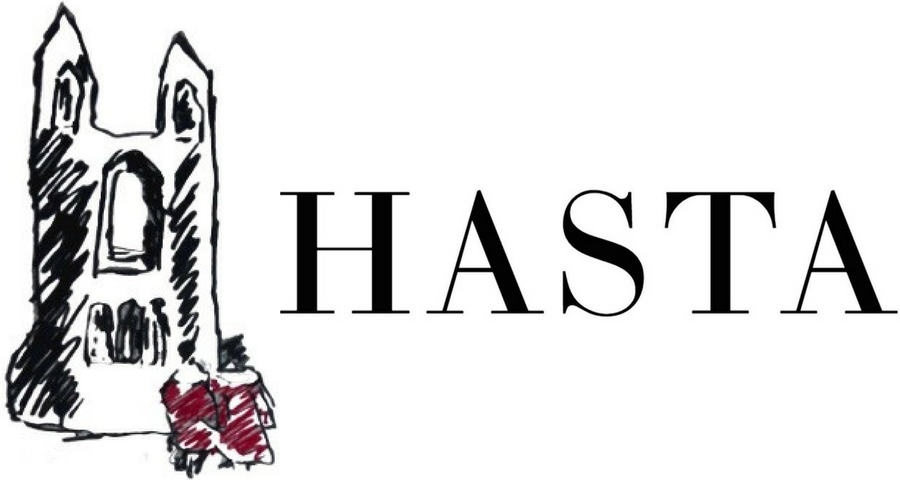Angel-spun: Shetland Lace
By Brynn Gordon
Eliza, Ann and Joan Sutherland, of Chromate Lane, Lerwick. Shetland Museum, photograph NE04481.
When exam and essay season begins, many St Andrews students will fall back on hobbies like sewing, knitting or crochet, all of which have gained popularity in online spaces in recent years. If any student feels compelled to pick up the needles during this time, they can reflect on the historical lineage their crafting connects them to – explored here through the impossibly thin, impossibly frothy, and impossibly complex work of Shetland lace.
In the cold climate of Scotland’s northern islands of Shetland, the crofters and residents naturally would be drawn towards heat-retaining wool products that could be layered to trap warmth. As early as the 17th century, Shetland is noted for the “finest” quality of its knitted products, a reputation that would continue to grow over successive centuries. By the 19th century, Shetland lace was a major component of the famous Shetland knitwear industry, popularised by Queen Victoria’s preference for them alongside the romantic Victorian ideal of Scotland.
The production of Shetland lace was often a side occupation for Shetland Islanders stemming from the island’s crofting and wool industry. It represented a cottage industry, executed by using thin, double-pointed needles connected to a “knitting belt” that allowed crafters to work while they went about their daily lives.
John Bruce of Sumburgh christening shawl c. 1837, SM, TEX 7771, image courtesy of Shetland Museum Archives.
The earliest surviving example of Shetland lace is seen in the Christening Shawl (c.1837) donated to the Shetland Museum with the John Bruce of Sumburgh. Despite its small size, the shawl samples many core motifs of Shetland knitting, including eyelid, Madeira diamond, basket o’ flowers, puzzle and lace edges, among others.
Outside of reflecting the spiritual importance of an event like a christening, the hours of planning, knitting, and blocking that went into this textile, as well as the quality of the yarn itself, reveal this shawl as a luxury item. Even in 1733, a pair of Shetland lace stockings was known to fetch a price of 5 pounds in 1733, roughly equivalent in today’s currency to upwards of 1,000 pounds.
While this is the oldest example of Shetland knitting, its high degree of technical execution and the easy balance between concrete motifs and intricate lacework point to the undocumented material culture behind even the oldest examples.
Anonymous, Shawl, c. 19th-20th century, TEX 2019.32. Shetland Museum Archives
A later, more commercial example of Shetland lace is seen above – comprising 258,300 stitches in just the central panel. This style of “crêpe” lace knitting is named for the feminisation of the French term “cresp”, referring to a textured, wrinkled fabric. While the “Cobweb” lace (the categorisation for the thinnest spun Shetland wool) was soft, the strong “twist” embedded into the fibre during the spinning process caused each strand to remain distinct from the other fibres in the project. This caused each ridge of knit and purl stitch to appear as a raised wrinkle, accounting for the association.
The comparatively simpler design of this shawl may suggest its designation as a readily available fashion item rather than an intricate luxury good. While the craftsperson responsible remains anonymous, it is believed she worked for AI Tulloch’s firm “Tulloch's of Shetland” (in operation between 1915 and 1939) based in Lerwick.
Mrs. G. A. Reay (nee Shewan) of Fetlar, Lace stole. image courtesy of Shetland Museum Archives, photograph JB00029.
A long time has passed between the production of these shawls and the present day. Currently there are no full-time creators of Shetland lace – as early as 1956 the Shetland News reported that the death of a ‘noted Shetland spinner and knitter’ represented ‘a great loss to an art now rapidly becoming extinct’. Despite this threat to the craft, hope for the future of the craft is represented by the 21-30 part-time Shetland knitters and the over 5000 hobbyists who continue to pass on the skill to the next generation.
Whether produced today or centuries ago, Shetland and Shetland inspired lace is characterised by its dynamic and flowing texture, floating through the air thin as a whisper. It's complex patterns of interrelating holes and stitches come together in an effervescent froth of wool. As the position of applied arts continues to attract attention and admiration, the quality, artistry and craftsmanship represented in Shetland lace will continue to inspire viewers and artisans alike.
Bibliography
Chapman, Roslyn. “The History of the Fine Lace Knitting Industry in Nineteenth and Early Twentieth Century Shetland.” PHD Thesis, 2015. https://theses.gla.ac.uk/6763/1/2015ChapmanPhD.pdf.
Christiansen, Carol. “Oh so Fine and Simple : The Crepe Shawls | Shetland Museum & Archives.” Shetland Museum & Archives, August 22, 2019. https://www.shetlandmuseumandarchives.org.uk/blog/crepe-shawls.
Heritage Crafts. “Shetland Lace Knitting - Heritage Crafts,” April 8, 2024. https://www.heritagecrafts.org.uk/craft/shetland-lace-knitting/.




